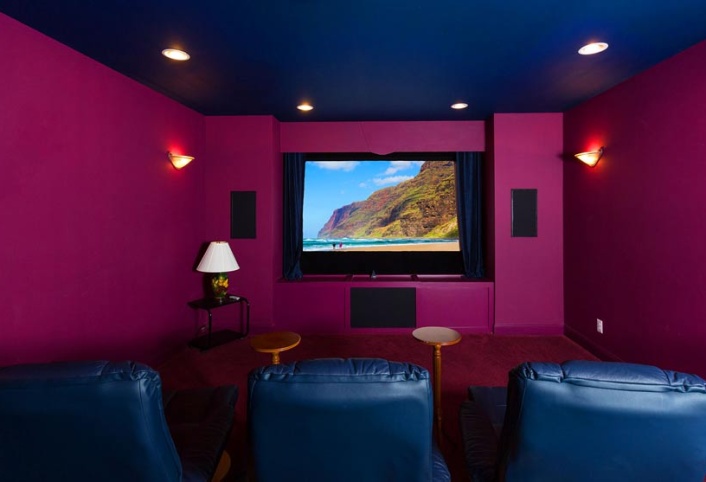Video technology has come a long way from the early days of grainy footage and bulky cameras. Today, advanced video systems are transforming how we capture, create, and communicate visually.
From high-definition 4K cameras small enough to fit in our pockets to rapidly evolving digital animation software and visualization tools, the possibilities for generating and distributing engaging video content are endless. For consumers, these advancements provide new avenues for creative expression and community connection.
Meanwhile, sectors like education, healthcare, and business are leveraging next-generation video capabilities to enhance training, collaboration, and operations in incredible ways. As video technology becomes more immersive, interactive, and intelligent, how will it continue to augment our visual experiences? Will emerging innovations like volumetric capture and light field displays act as a catalyst for the next visual revolution?
By enhancing our ability to understand and interact with the world around us in richer and more meaningful ways, advanced video systems hold tremendous disruptive potential. Join us as we explore the trajectories of these rapidly accelerating technologies and imagine how the future of video may reshape communication, entertainment, relationships, and even our own identities.
A Brief History of Video Systems
To understand where we are headed, it helps to know how we got here. Television technology traces back to the late 19th century when the first mechanical systems were developed. Over the next few decades, capabilities improved from fuzzy black-and-white images to the introduction of color and early HDTV prototypes.
By the turn of the 21st century, screen resolutions made a giant leap with the arrival of fully digital formats. High Definition or HD offered six times more pixels than standard definition counterparts. And the pixels kept multiplying rapidly from there with 4K and even 8K systems now entering homes. The transition of video technology from analog to digital domain unleashed a wave of exponential growth in terms of quality and capabilities we are still riding today.
The Core Components
But what exactly constitutes an advanced video system in this current landscape? The critical benchmarks include display resolutions, high dynamic range (HDR), expanded color gamuts, high frame rates (HFR), and immersive sound. Let’s break these down briefly:
- Display Resolutions – 4K (with around 4,000 pixels along the horizontal line) and 8K (8,000 pixels) offer four to sixteen times more detail than Full HD.
- High Dynamic Range – HDR increases the range of luminance levels, adding depth and detail to shadows and highlights.
- Wide Color Gamuts – Technologies like Quantum Dot deliver a more expansive palette of over a billion colors.
- High Frame Rates – By increasing the frames per second, HFR enables smoother and sharper motion clarity.
- Immersive Sound – Multi-channel sound systems with Dolby Atmos and 3D audio create deeply enveloping soundscapes. With all these technologies converging, advanced video systems can create astounding cinematic experiences in the comfort of viewers’ homes.
Cross-Industry Applications
These enhanced visual technologies provide engaging solutions for needs across sectors. In entertainment, streaming platforms like Netflix and Amazon Prime now offer extensive 4K HDR content libraries with growing selections of 8K programming also in the works. The theater industry is also quickly adopting laser projectors and immersive sound to provide moviegoers added value.
Beyond entertainment, advanced imaging plays a crucial role in broadcast sports production by enabling instant replay systems, multi-channel coverage, and bullet-time effects. Video engineering also proves vital for surveillance networks in both public and private security systems. Additionally, high-fidelity visual communication systems can facilitate telemedicine applications like robotic surgeries across vast distances. The utility of these technologies will likely expand even further as more industries recognize their potential.
Enhancing User Experience
The most important application of advanced video systems is in elevating user experience and engagement across applications like virtual reality and interactive content. The expanded color range makes scenes more vibrant while HDR offers truer-to-life contrast.
Higher resolutions enable a wider field of view in VR environments, increasing immersion. Faster frame rates translate to lag-free motions, preventing nausea. And enveloping soundtracks boost the feeling of presence. From the emotional impact of crystal clear visuals down to reducing headaches by lowering eye strain, these technologies create a wholly more enjoyable experience.
Overcoming Key Challenges
Despite immense opportunities, a few roadblocks stand in the way of widespread adoption of these upgrades. Expenses remain high for both production and distribution along with consumer equipment lagging. Content availability also proves limited as creators work to catch up. Finally, the substantial bandwidth requirements for streaming high-fidelity media call for continued infrastructure development to keep pace.
However, promising solutions currently counter these barriers including rapidly declining costs following technology maturity, growth of online streaming distribution platforms like YouTube and Twitch that support next-gen formats, sinking prices of supporting devices like 8K televisions, and expanding 5G and fiber-optic networks.
The Future of Video
As advanced imaging technologies become more affordable and accessible, they will open new creative possibilities for producers while meeting consumers’ appetites for superior quality. Based on current projections, 8K cameras and televisions could hit mass market price points within five years. Upcoming display technologies like microLED promise even brighter panels with filters for avoiding eye strain.
In the more distant future, holographic displays and light field technology may enable 3D viewing without glasses. Further out, neural interfaces could directly transmit visual data to the human brain for a private, heads-up experience. However advanced technologies end up shaping media consumption, the foundations established today bring excitement for the many innovations yet to come over the horizon in the new visual revolution.
In Conclusion
From early mechanized television to the first black-and-white broadcast through color sets to the initial jump into digital high definition – each era marked a leap forward in capabilities and engagement. Today’s additions of higher resolutions, dimensionality, fluid motions, and immersiveness represent the next era. Though costs and infrastructure needs currently limit these technologies from mass accessibility, rapid development aims to overcome these barriers with high-fidelity visual and audio systems reaching more consumers each year.
As both creators and audiences continue embracing these advancements, they shape the new visual revolution redefining media experiences across industries like entertainment, telecommunications, security, and healthcare.
We now stand at an amazing crossing point where science fiction begins morphing into science fact opening doors to creative possibilities. Though some challenges remain, the outlook points to an exciting visceral future in the decades ahead.




